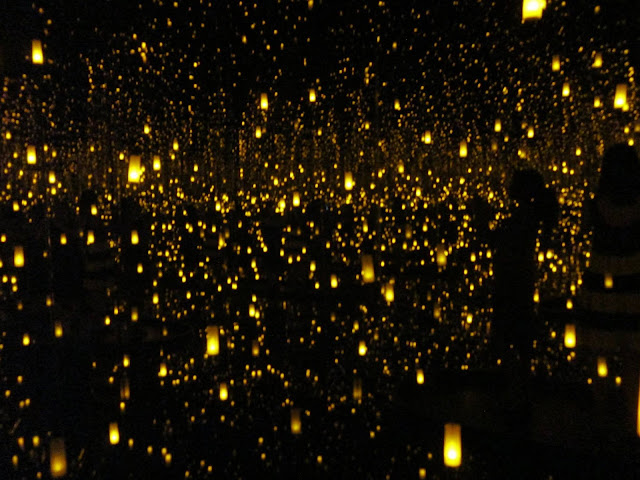Everyone in the Pacific Northwest who is a fan of Andrew Wyeth and the rest of the talented Wyeth family is in for a treat this fall with a big exhibit at both the Portland Art Museum and the Seattle Art Museum which will be running concurrently starting in October 2017.The PAM show, The Wyeths: Three Generations, runs from Oct 7, 2017 – Jan 28, 2018 and the SAM show, Andrew Wyeth: In Retrospect, runs from Oct 19 2017 – Jan 15 2018. More information from the website of each museum is listed below. This will provide an excellent opportunity to view some of the most influential representational painting from the 20th century. I can't wait to attend both exhibits later this fall!
 |
| Andrew Wyeth (American, 1917-2009), On the Edge, 2001, Tempera on panel, Bank of America Collection. |
The Wyeths:Three Generations
Works from the Bank of America Collection
OCT 7, 2017 – JAN 28, 2018
The Wyeths are one of America’s foremost artistic families. Their work has captured the admiration of audiences for three generations, spanning the golden age of illustration to mid-century portraiture. Drawing from the Bank of America Merrill Lynch Collection, The Wyeths: Three Generations includes more than eighty paintings and drawings by N. C. Wyeth (1882-1945), his son Andrew Wyeth (1917-2009) and his grandson Jamie Wyeth (born in 1946). All showcase a commitment to realism, technical brilliance, and narrative sensibility. Patriarch N.C. Wyeth (1882-1945) was one of the country’s foremost illustrators at the turn of the twentieth century. His ability to beautifully traverse fantasy and realism made him one of the most versatile American artists of his time. N.C.’s son Andrew Wyeth (1917-2009) became known for his detailed realism and haunting scenes of American life inspired by the history and beauty of the American northeast.
Although not as well-known as her brother, Henriette Wyeth (1907-1997) painted striking portraits, landscapes, and still lifes. She is also represented in the exhibition, as is her husband Peter Hurd (1904-1984), who chronicled the landscape of the American West. Lastly, Andrew’s son Jamie (b. 1946) represents the family’s third generation of artists. Jamie, too, utilizes a realistic style, but adds his own twist of magic and mystery to his subjects.
MAJOR SPONSORS: Bank of America, Joanne Lilley in memory of Pete Mark
SPONSORS: The Flowerree Foundation, Laura S. Meier in memory of Pete Mark
 |
Andrew Wyeth, Winter 1946, 1946, Tempera on hardboard panel, 31 3/8 x 48 in., North Carolina Museum of Art, Raleigh, Purchased with funds from the State of North Carolina, © 2017 Andrew Wyeth/Artists Rights Society (ARS). |
Simonyi Special Exhibition Galleries
Thu Oct 19 2017 – Mon Jan 15 2018
Enter Andrew Wyeth’s reality. On the 100th anniversary of the artist’s birth, Andrew Wyeth: In Retrospect examines the American master’s 75-year career and offers unexpected perspectives on his art and legacy. Organized in partnership with the Brandywine River Museum, this major exhibition presents over 100 of the artist’s paintings and drawings. It looks back on a century in America when Wyeth confounded critics and deviated from the American art mainstream, but continued to figure prominently in much of the country’s artistic discourse. Andrew Wyeth: In Retrospect follows the evolution of one of America’s most famous painters by bringing together well-known and rarely seen works. From depictions of his life in Chadds Ford, Pennsylvania, to the coastal villages of Maine, Wyeth created timeless images of places, people, and things—layered with acute observation and a boundless imagination—all imbued with the artist’s mysterious temperament. Often out of synch with the time, Wyeth’s art challenged the norms of realism and abstraction.
The exhibition begins in the late 1930s with Wyeth’s breakthrough works of brilliantly colored, boldly gestural, transparent watercolors of the Maine coast. These were soon set aside for the somber-toned and tightly rendered tempera paintings often associated with the artist. They include some of the artist’s most famous paintings, such as portraits of Christina Olson of Maine and Karl Kuerner, his neighbor in Chadds Ford.
Also on view are the artist’s little known portraits of African Americans, a major focus of Wyeth’s work in the 1950s and ‘60s, followed by work from the 1970s and ‘80s, including the eroticism of the once-secret Helga paintings, and other deeply psychological but lesser known paintings from the Helga years. Finally, the exhibition reflects on images of his later life as he closed the book on his earlier subjects and looked for new ones. It brings to Seattle Wyeth’s last painting, Goodbye, which has not been seen since it was briefly shown to those who attended the artist’s memorial service in 2009.
Andrew Wyeth investigated the possibilities of the portrait, the figure, and the places we inhabit—shunning narrative and rising above cliché—to convey the very emotions that make us human.
The exhibition will be accompanied by a fully-illustrated catalogue co-published by Yale University Press.
Andrew Wyeth: In Retrospect is co-organized by the Brandywine River Museum of Art and Seattle Art Museum.
















